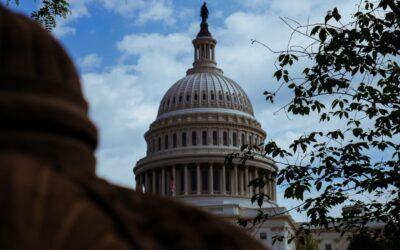The market drop of December 2018 seems like ages ago, considering recent market volatility, Coronavirus, and the missing March Madness. However, the December 2018 drop did result in lower AFTAPs for many calendar-year plans. Unless your plan’s AFTAP has been certified for 2020, the effective AFTAP is going to decrease 10% on April 1, 2020. If the January 1, 2019 AFTAP percentage is in the eighties, it will fall below 80%. This may result in your plan being unable to pay full lump sums and you being required to send notices to all affected participants within 30 days.
On December 20, 2019, President Trump signed the Further Consolidated Appropriations Act, 2020, which includes the Setting Each Community Up for Retirement Enhancement (SECURE) Act. There are provisions within both of these Acts that are of interest to defined benefit plan sponsors.
Inservice Distributions
Under the new provisions, plans may be amended to allow in-service distributions as early as age 59 ½ (previously, the earliest age was 62). This law change could allow more opportunities for de-risking, especially for a frozen plan.
This change is important to keep in mind since the PBGC per participant premiums rose from $80 to $83 in 2020 and the variable rate on unfunded liabilities rose from 4.3% to 4.5%.
If the current market drop lasts thru the end of the year, more plans will be at the PBGC per-participant cap. If your plan is at the cap, for each participant that is paid out or an annuity is purchased for, your plan will save $644 in PBGC premiums each year following the year they were paid out. The savings each year increases with inflation.
Nondiscrimination Testing Relief
The original temporary relief for closed plans was passed in December 2013 and then renewed annually. The closed plan relief allowed plans to pass discrimination testing as long as they were frozen before December 13, 2013 and had passed discrimination testing at the time they were frozen.
The SECURE Act now makes the relief permanent and also gives more flexibility in passing nondiscrimination by making it easier to aggregate a defined contribution plan with a frozen defined benefit plan.
Minimum Participation Test Relief
The Act also provides participation test relief. The Minimum Participation Test under IRC Section 401(a)(26) requires a plan to cover the minimum of 50 employees or 40% of all employees. The relief applies to a plan that has been frozen or only provides accruals to a closed class of participants:
- The plan must have passed minimum participation on the effective date of closure or freeze.
- The closure or freeze amendment must have been adopted before April 5, 2017, or, if adopted later, the plan cannot have any substantial increase in coverage or benefits in the five years prior to the closure or freeze.
Required Beginning Date Pushed Back
Distributions from your plan must begin no later than a participant’s Required Beginning Date (RMD). A participant’s required beginning date is April 1 of the calendar year following the later of
- the year the participant attains age 70 ½, and
- the year the participant terminates employment.
However, for participants that are more than 5% owners, the required beginning date is April 1 of the calendar year following the year the participant attains age 70 ½.
The SECURE Act increases the required minimum distribution age from 70 ½ to 72. The new law applies to participants who attain 70 ½ after December 31, 2019.
Increased Late Filing Fees
Lastly, it is now even more important not to miss your plan’s IRS filing deadlines. The daily late fees, as well as the maximum fees, have been increased tenfold. This includes the Form 5500, the Form 8955-SSA, and the lesser known Form 8822-B (the form required for plan sponsors to register a change in plan name or plan administer name/address). It is possible to get the fees waived by the IRS if there is a reasonable explanation for the delay, but it’s best not to rely on the IRS’ good mercy.
If you have questions regarding the SECURE Act or how it impacts your specific plan, please reach out to the Watkins Ross team.



